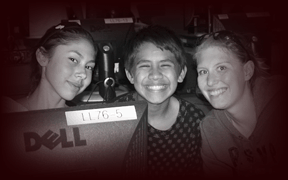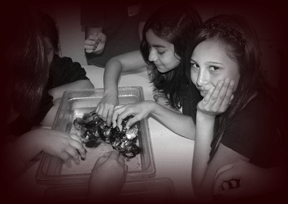AIR Fall 2012
Exploring our Native Culture and History through Photography
This fall, we introduced the topic of photography as a means to explore our Native identity, past and present. Students learned the basics of photography and had the opportunity to take and capture (photograph) something of importance to them and their communities.
Using the Davis Project as a backdrop to our "Native Communities through Photos" concept we had local elders come in to speak about the historical significance of some of the photos from the project and Museum of Man archivists that explained what’s involved in using photos as historical documents which including various concepts of cataloging process and research.
Througout the program we visited the SDSU library, where mentors guided our students through research methodology while investigating the photos and their context. Using this topic as a foundation, our students became familiar with the college setting, were exposed to campus life, hear personal stories from college mentors, learned about the research process, the art of public speaking, and most importantly, the importance of understanding people and places from our Native history. |



